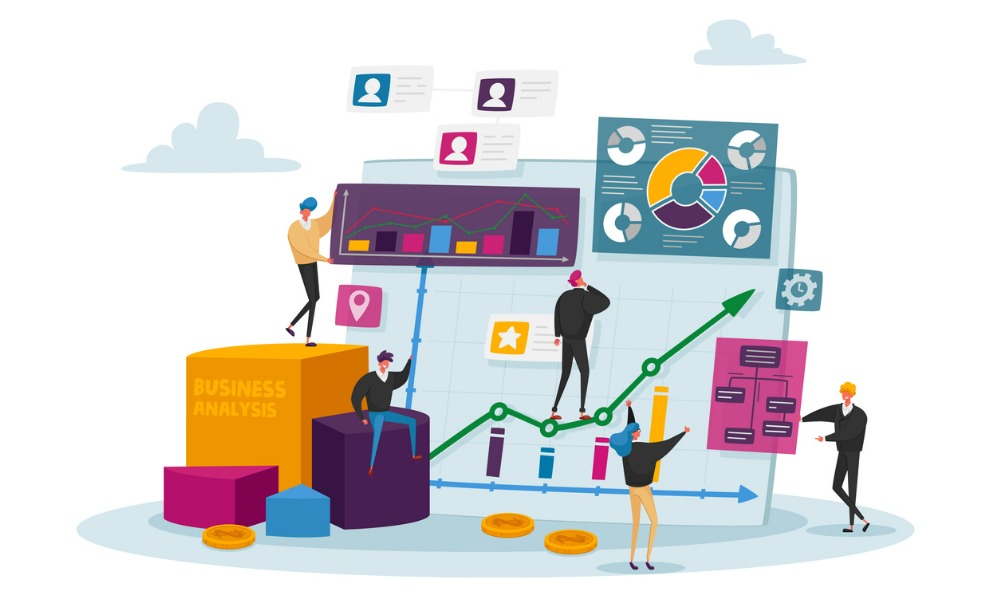
'A lot of organisations haven't learned to pull the levers to maximise the value,' says HR head at IAG

“Uncovered, pristine treasure.”
So says Rosario Germino, senior people analytics consultant at IAG, in describing people analytics.
She runs a team of six data analysts under the company’s HR function and says you can’t do operations or marketing without data.
“But HR, for decades, they haven’t used it, so it’s difficult to understand the value that they’re not realising.
“You assume, for instance, that higher engagement leads to better customer outcomes and satisfaction,” said Germino, “but a lot of organisations haven’t necessarily measured that internally or tested and learned to pull the levers to maximise that value.”
Germino’s comments are backed up by a recent survey that found 75% of organisations are investing in people analytics — but only 26% of those organisations have a clearly defined people analytics purpose that is aligned to business needs and drives real change in the organisation.
It’s not just Kiwis who are lagging in this area, according to Hugh Hawthorne, Founder of PeopleNav, which did the survey.
“The data is similar across APAC, and even globally,” he said. “There is a real opportunity for HR to develop their skills in this space… HR could do more to get its teeth into what is potentially a bit of a goldmine.”
Hawthorne believes that lack of data analysis is a major contributor to what sets HR back in the boardroom when seeking investment for the projects they’d like to implement.
“Often HR is leaning on the hope that the people who make the decisions have empathy or can see the intellectual gain they get from it, but when you start bringing data into business outcomes, you start making a far more robust case for what you want to do,” said Hawthorne.
Aston Moss, chief people officer at Briscoe Group, and one of The Best HR Executives in Australia and New Zealand, finds the lack of people data analysis within organisations somewhat surprising because they have more internal people data than customer data — but he puts it down to the lack of tangible commercial value.
“Organisations have been really slow to look at their own internal data, they’ve typically been more interested in external customer data,” said Moss. “There’s less visibility around how you demonstrate the value; people talk about reduction in turnover or improved capability but it’s often very difficult to measure, whereas being able to say, ‘We’ve just made another $200 off that customer,’ that’s often much easier to measure.”
At Briscoe Group, there’s an expectation within the wider HR team to gather and understand data and use it to formulate or refute ideas.
“Some investment in people analytics is critical to have credibility and to demonstrate the value and different contributions that HR makes to an organisation,” said Moss. “Being able to quantify things is an incredibly valuable component, particularly in HR where sometimes quantification can fall short of what our colleagues in areas such as marketing are typically able to do.”
Hawthorne believes the organisations doing people analytics (PA) well are the ones looking beyond the HR data set in looking at sales, marketing, health and safety, and IT data, and making connections between people and the performance of the organisation.
Hawthorne’s research uncovered five key differentiators in what he calls the more ‘people intelligent’ organisations:
PA is lead from HR: The chief people officer sets out the priorities for PA with a clear business imperative, while in other organisations, PA work may lack direction or focus and they tend to focus on the report rather than the “why?”
PA is collaborative: The PA team are more collaborative and build deep partnerships across HR; in other organisations, the PA team operates in a silo.
PA team looks beyond HR data: They integrate business metrics from across the organisation to affirm the link between people and business results, where other organisations focus exclusively on HR data.
PA team incorporates enabling technology: People intelligent companies integrate HRIS and coding, where other organisations use more time-consuming methods to engineer data.
PA team extracts powerful insights: The PA team focuses on key capabilities: Insight discovery, storytelling, visualisation, and consulting; in other organisations, inefficient data engineering means less time extracting powerful insights.